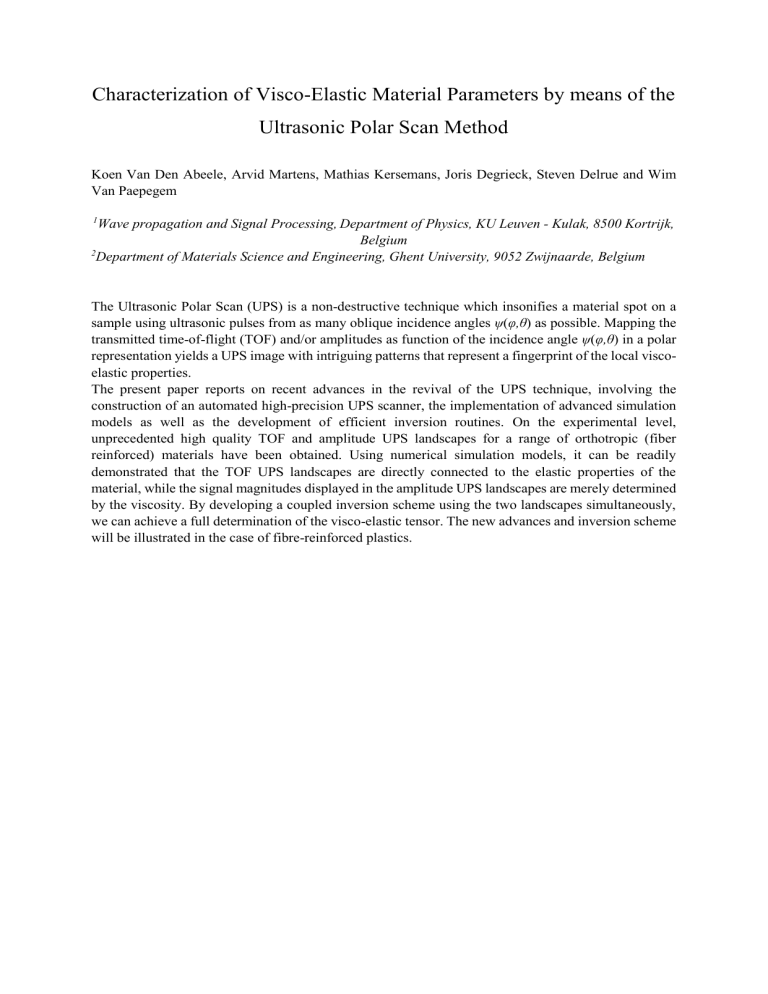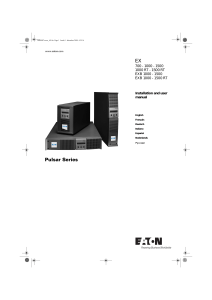full text

Characterization of Visco-Elastic Material Parameters by means of the
Ultrasonic Polar Scan Method
Koen Van Den Abeele, Arvid Martens, Mathias Kersemans, Joris Degrieck, Steven Delrue and Wim
Van Paepegem
1
Wave propagation and Signal Processing, Department of Physics, KU Leuven - Kulak, 8500 Kortrijk,
Belgium
2 Department of Materials Science and Engineering, Ghent University, 9052 Zwijnaarde, Belgium
The Ultrasonic Polar Scan (UPS) is a non-destructive technique which insonifies a material spot on a sample using ultrasonic pulses from as many oblique incidence angles
ψ
(
φ,θ
) as possible. Mapping the transmitted time-of-flight (TOF) and/or amplitudes as function of the incidence angle
ψ
(
φ,θ
) in a polar representation yields a UPS image with intriguing patterns that represent a fingerprint of the local viscoelastic properties.
The present paper reports on recent advances in the revival of the UPS technique, involving the construction of an automated high-precision UPS scanner, the implementation of advanced simulation models as well as the development of efficient inversion routines. On the experimental level, unprecedented high quality TOF and amplitude UPS landscapes for a range of orthotropic (fiber reinforced) materials have been obtained. Using numerical simulation models, it can be readily demonstrated that the TOF UPS landscapes are directly connected to the elastic properties of the material, while the signal magnitudes displayed in the amplitude UPS landscapes are merely determined by the viscosity. By developing a coupled inversion scheme using the two landscapes simultaneously, we can achieve a full determination of the visco-elastic tensor. The new advances and inversion scheme will be illustrated in the case of fibre-reinforced plastics.
